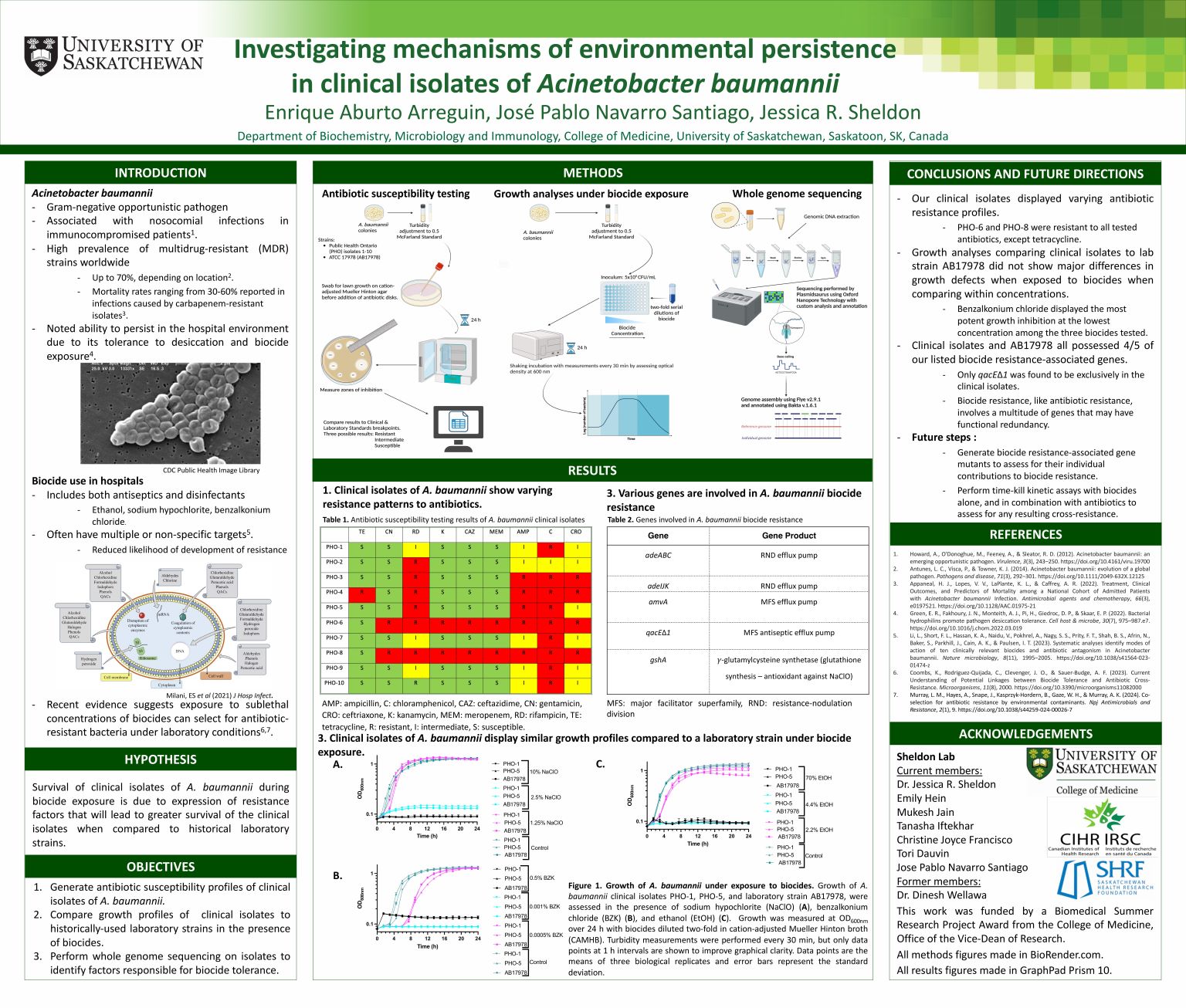
Investigating mechanisms of environmental persistence in clinical isolates of Acinetobacter baumannii
Enrique Aburto Arreguin
The bacterium Acinetobacter baumannii has gained notoriety over recent decades as a major cause of antibiotic-resistant nosocomial infections. The prevalence of A. baumannii here can be attributed to its ability to survive harsh conditions characterized by desiccation and exposure to commonly used biocides. Here, A. baumannii can readily survive on various medical devices such as breathing tubes, feeding tubes, and catheters — subsequently causing infections, particularly in immunocompromised patients and those experiencing extended hospital stays. Although this may explain the existence of A. baumannii reservoirs in hospitals, direct assessment of clinical isolates’ ability to withstand various stressors is lacking in the literature. We hypothesized that the clinical isolate survival under biocide exposure is due to expression of factors not present in historical laboratory strains of the bacterium. Antibiotic susceptibility assessments of 10 isolates showed varying degrees of resistance, including two isolates that were resistant to last-resort carbapenem antibiotics. Growth analyses with ethanol, bleach, and benzalkonium chloride showed no substantial survival differences between clinical isolates and laboratory strain AB17978 when comparing within biocide concentrations. Whole-genome sequencing showed a conservation of 4/5 identified biocide resistance genes amongst isolates and AB17978. Future experiments will involve generating mutants in identified genes to assess individual contributions to biocide resistance.
